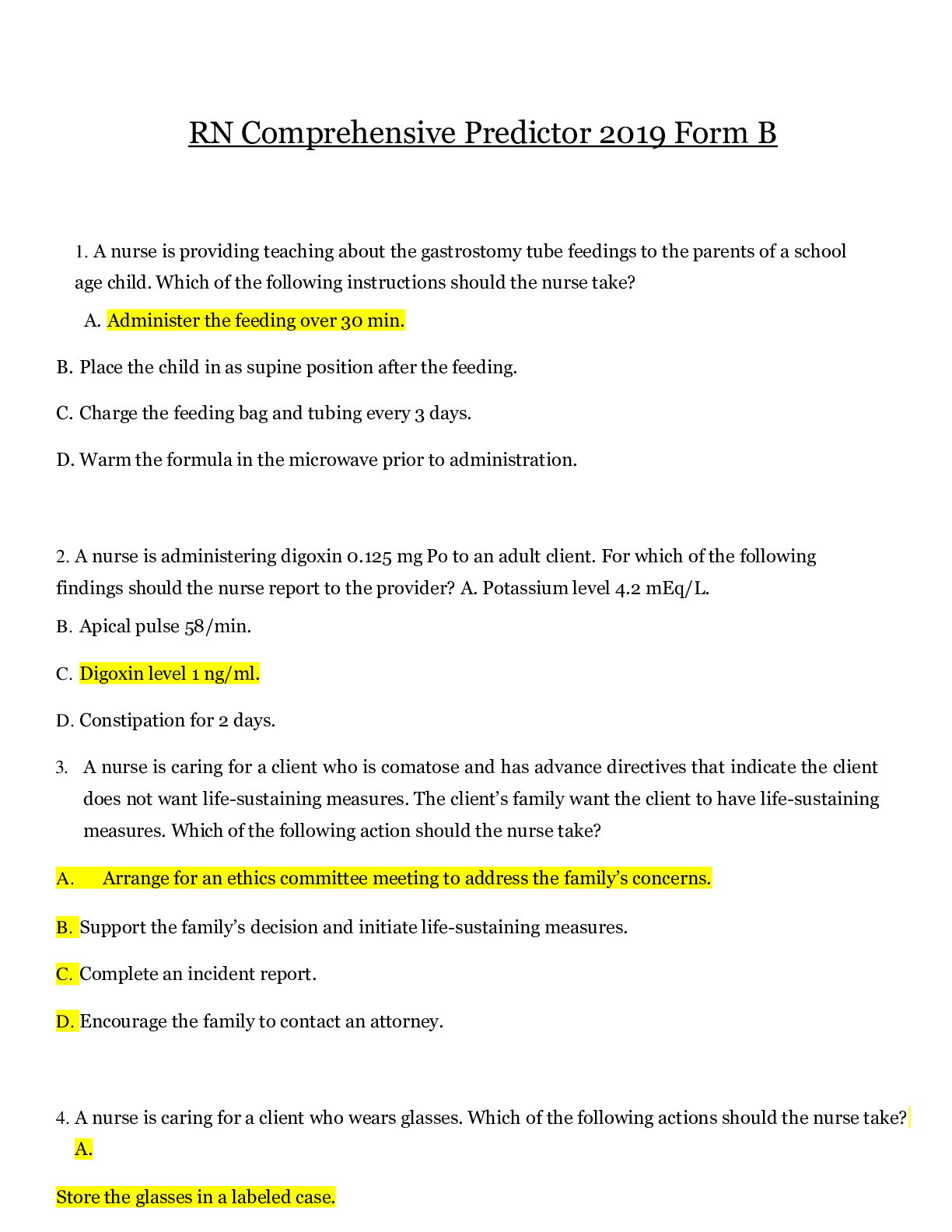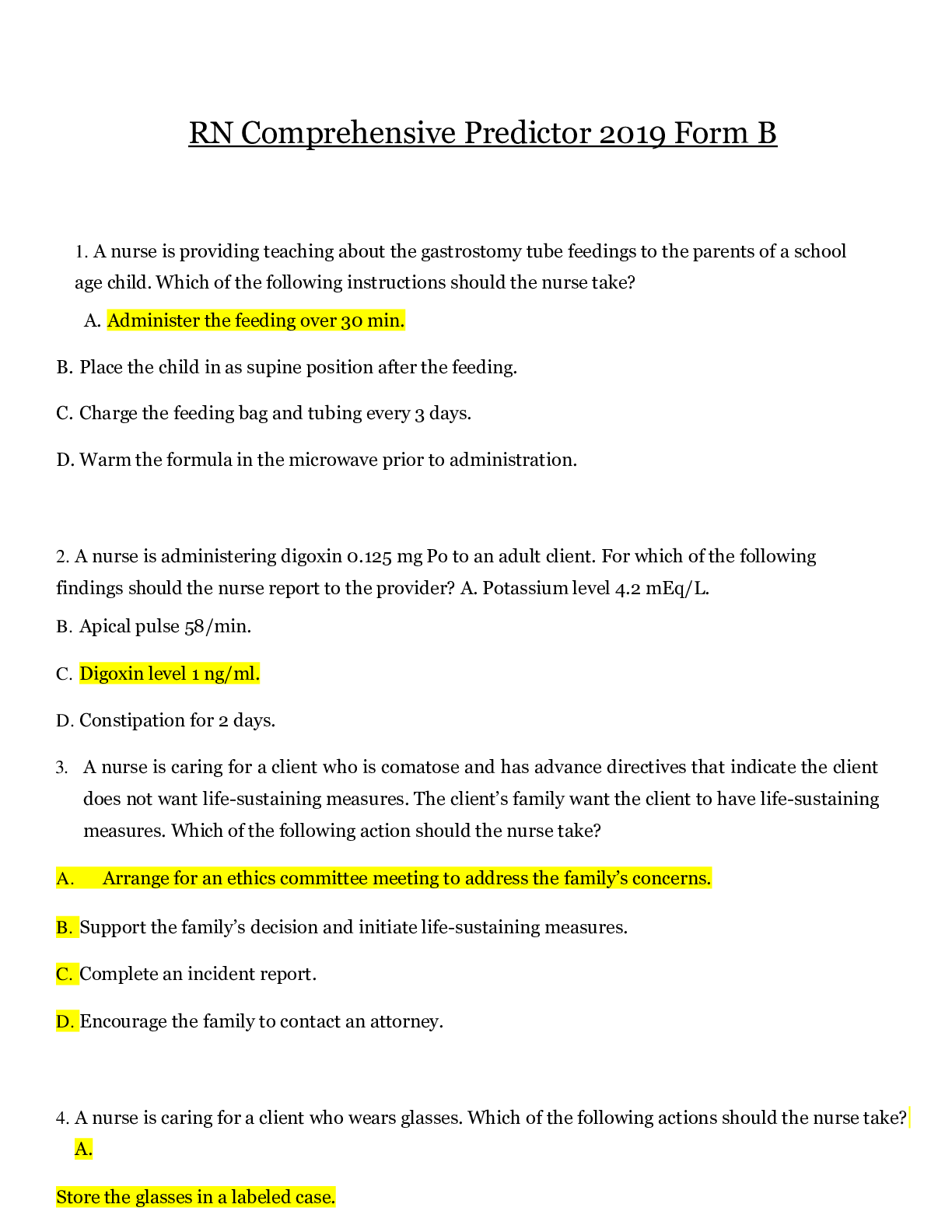RN Comprehensive Predictor 2019 Form B
Course
Project Management
Subject
Chemistry
Category
ATI Proctored
Pages
80
Uploaded By
ATIPROS
Preview 5 out of 80 Pages


Download all 80 pages for $ 9.95
Reviews (0)
$9.95
